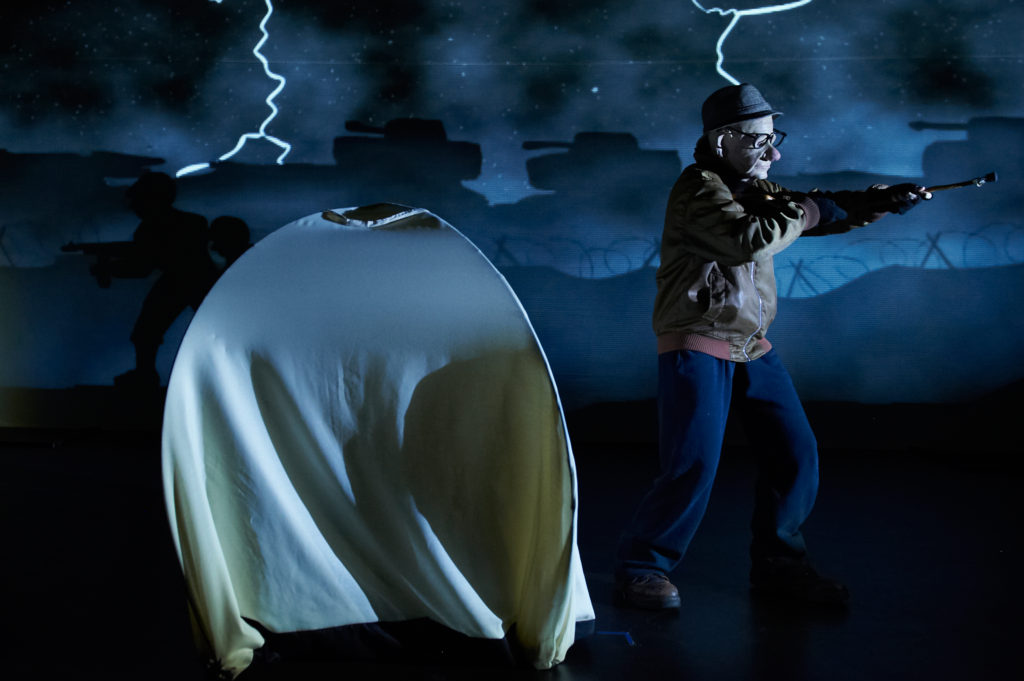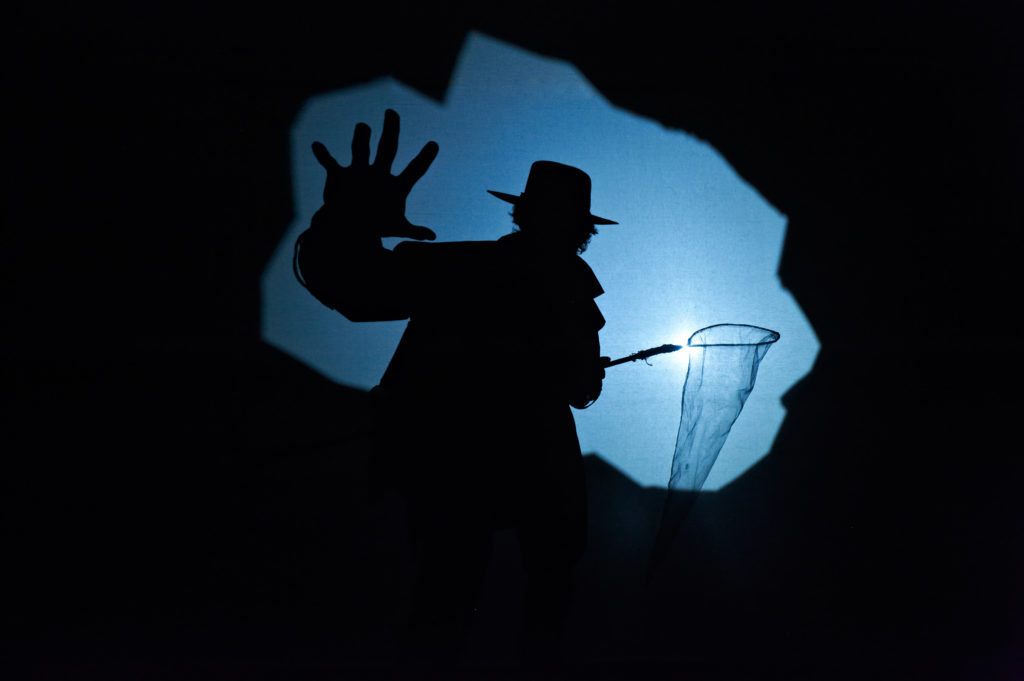
“It’s Dark Outside” was a delight. It was intrinsically sad yet uplifting, visually mesmerising and ultimately spellbinding. Its meaning is elusive at first. Pitched as a wild west mystery, we follow our weathered protagonist’s quest to understand the mysterious things that have been happening around him. It’s puzzling; household objects are inexplicably relocating, weird intangible recollections are blending with reality and there is a flight from a mysterious bounty hunter who is always just behind the last bend. Beneath this celluloid worthy adventure, however, the truth is heart-wrenching. We are witnessing the confusion of an old man battling with dementia. We begin to understand that we are watching fragments of memory and hallucination vie for position with reality, the non-recognition of loved ones and the resulting disorientation leading to fear, distrust, frustration and retaliation.
The result is heartbreaking yet never traumatic or callous. It’s done so sensitively, and with such visual artistry that ultimately the piece is tender, warm, and so very human. As the deteriorated mind is stripped back to pure emotion, we witness the basics of human experience, not just fear and anxiety but also playfulness, wonder, and curiosity. There are magical scenes in which our elderly hero takes gleeful enjoyment in playing with a little scampering dog, delights in dancing, and thrills at riding on the back of his trusted steed (who has morphed from a tent! – yes, it’s surreal). There is also an enchanting scene where our hero is sublimely content drifting on a glowing sleep cloud among the stars and constellations.

Far from coming away depressed and fearful of the deterioration of old age, I left with a feeling of how rich and inestimable memories are. How precious are lives and memories, no matter how humble or perceivably mundane.
The subject matter is delicate and in less skilled hands the piece might have been crass, but the production was so imaginative, refined, and skilled that the result had a compelling integrity. The creators used a multitude of media in order to best portray the intended essence of each scene. Weaved together with mastery were live performance, animation, shadow projection, and puppetry. There was no dialogue, but an emotive musical accompaniment.
My only reservation was it being branded as a children’s show. For an adult the subject matter of the show is fairly easy to grasp, you quickly work out that it is depicting dementia, but I wondered how receptive the children in the audience would be to this. I worried that with no prior briefing as to the show’s theme, they may be confused, and without that context to nestle the surreal goings-on in, they would either lose interest or worse become disturbed by the disorientation and erratic behaviour of the loveable main character. But on closer reflection, I thought that children tend to be more emotionally receptive than we think. They adapt readily to the serious facts of life if told sensitively.

I was reminded of watching my own grandparent consumed by dementia and as a child being perplexed and scared of this person who I had once had a strong relationship with. I’m sure it was explained to me, but perhaps a show such as this would have been just the delicate introduction that would have made such conversations easier.
In general then, I salute this challenging subject matter being aimed towards a child audience but would recommend that parents are prepared for the resulting questions or better still can find some way to introduce the subject matter in advance of the performance so that a child can truly appreciate this tender and beautiful play.
You can get tickets to all the other amazing PuSH shows here now!
-MG
